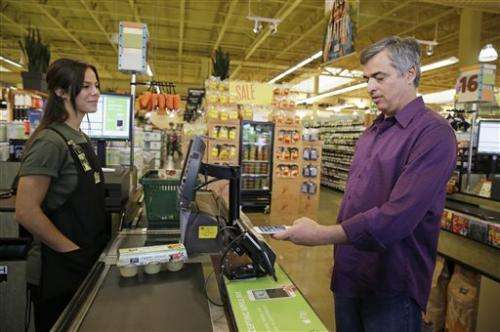With all the noise around omnichannel, we want to highlight retailers who are going above and beyond traditional expectations to provide amazing digital experiences for their physical store shoppers. Examples of such an experience have been done in industries like clothing and furniture. But, for retailers that provide products with an extremely short shelf life, like groceries, it is hard to see how omnichannel might fit in their strategies.
For the past year, Whole Foods has made a digital experience seem more attainable for grocers by using a strategy to target the millennial shopper and position their brand as an innovator of the traditional grocery store. They have found that the younger generations are generally more in line with their commitments to society, the environment, and organic products. As a result, they want to match their customers’ values of in technology and convenience.
The number of smartphone-owning adults continues to increase, and 4 out of 5 owners are using their phone to shop. From this, it appears that consumers seem ready to make the transition to mobile payments. Whole Foods is listening to the needs of their shoppers and became the first grocer to implement Apple Pay. They are demonstrating their desire for innovation and staying ahead of their competitors, and as a result, there have been 3 million transactions using Apple Pay to date. This makes up a little bit more than 2% of total transactions which is quite impressive for a new technology.
Whole Foods also is responding to the on-demand economy of millennials by teaming up with Instacart to allow consumers in 15 selected areas to order their groceries online and have them delivered to their homes within an hour. The perception of ecommerce for groceries is now changing and our desire for instant gratification is becoming more and more attainable. This added level of convenience makes Whole Foods a go-to solution, targets an ideal market, and has shown to increase the average order value by 2.5x. Before, if a customer wanted to make a quick run for milk, they might head to a convenience store to avoid any big hassle. With deliveries, more people are turning to Whole Foods for small purchases, so they will now be able to track what customers would buy without the barriers of a traditional grocery store.
Whole Foods has announced that their next iteration of their strategy will be a new type of store that will be smaller, less expensive, and more technology driven. Without any specific details, we wonder, what will these new stores bring? With Whole Foods having a newly invigorated ecommerce presence, will the new variety be a combination of the two? What we can hope for might look like the following:
- New digitally-driven stores could have ways to see how consumers are moving throughout the store with the use of grocery carts and baskets. Store managers can better decide layouts and see where to place promoted items in order to have the most visibility without the use of head counting.
- Possibly through the Whole Foods app or store-provided screens, customers can be shown new recipe ideas based on products they have in their cart or near them.
- As an extension, products can be easily searched through their chosen interface to bring them to the exact location and minimize time wandering the store.
- Interactive coupons and incentives could be provided for customers who interact digitally and discover new products.
CloudTags is working to connect customers through an engaging digital experience, and like-minded companies like Recipop that showing new ways to do just that. Recipop is launching newer ad formats called BasketAds which allow people who are buying groceries online to make any website a point of sale. We appreciate these innovative ideas and hope to see more in the future.
Whole Foods’ efforts have been a great example of a store using omnichannel. We are excited to see what the new generation of grocery stores will look like and believe that a connected store will be the answer.
Source: http://www.pymnts.com/in-depth/2015/whole-foods-millennial-strategy/#.VVJiCPlViko

